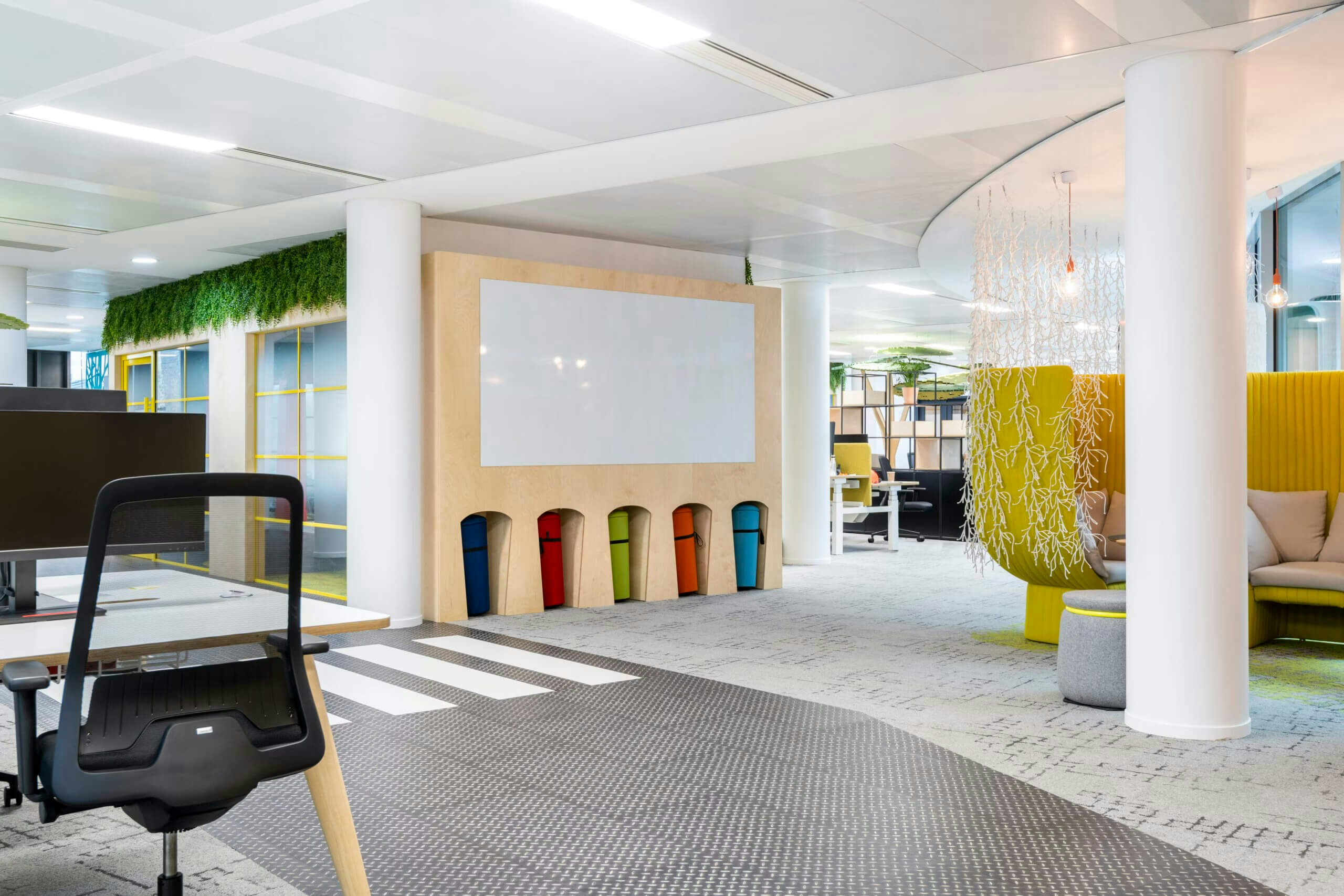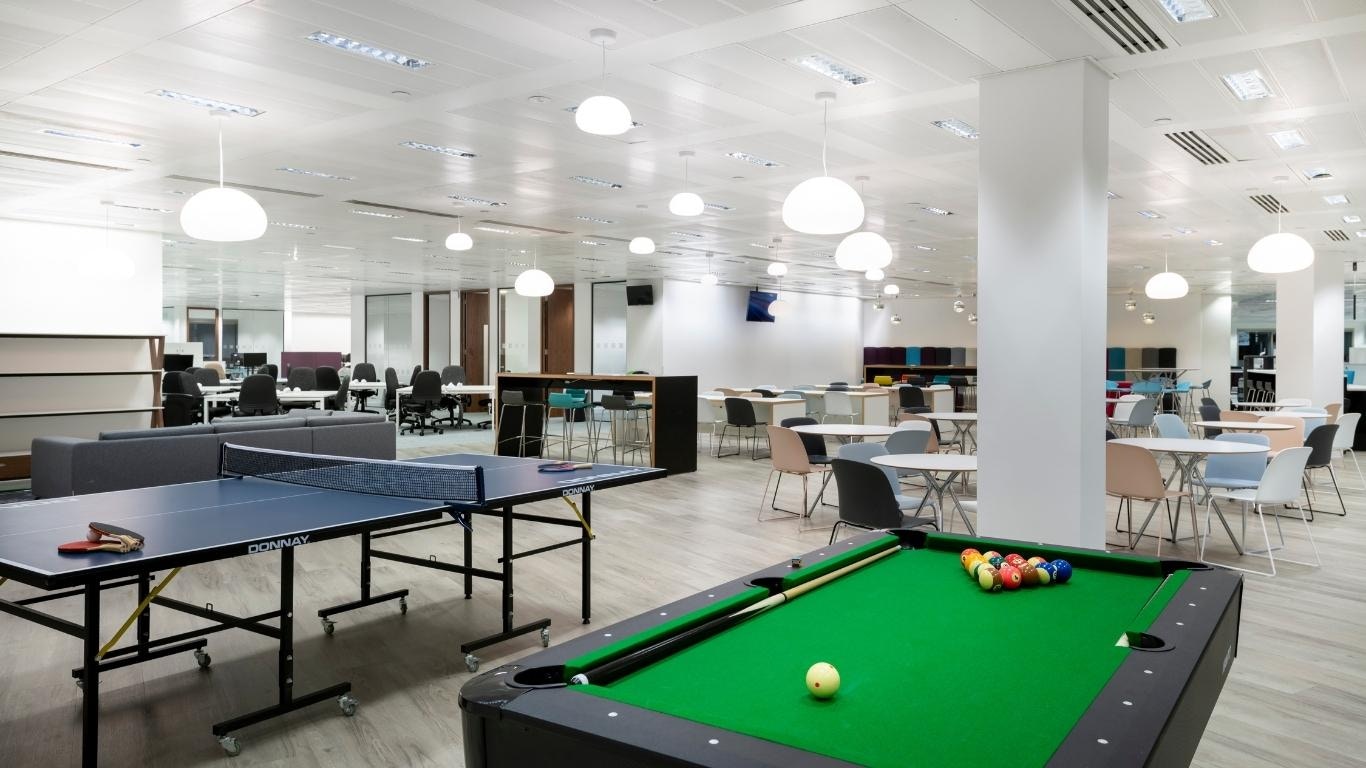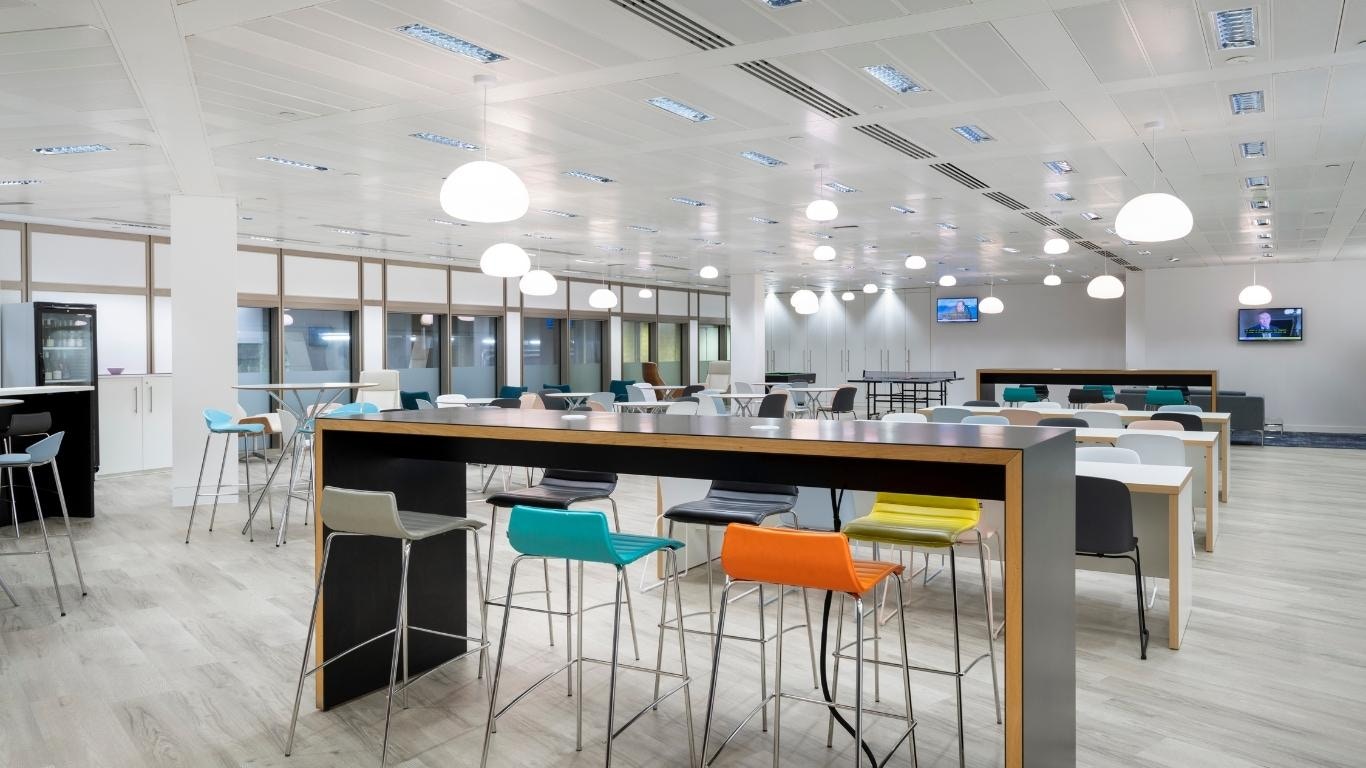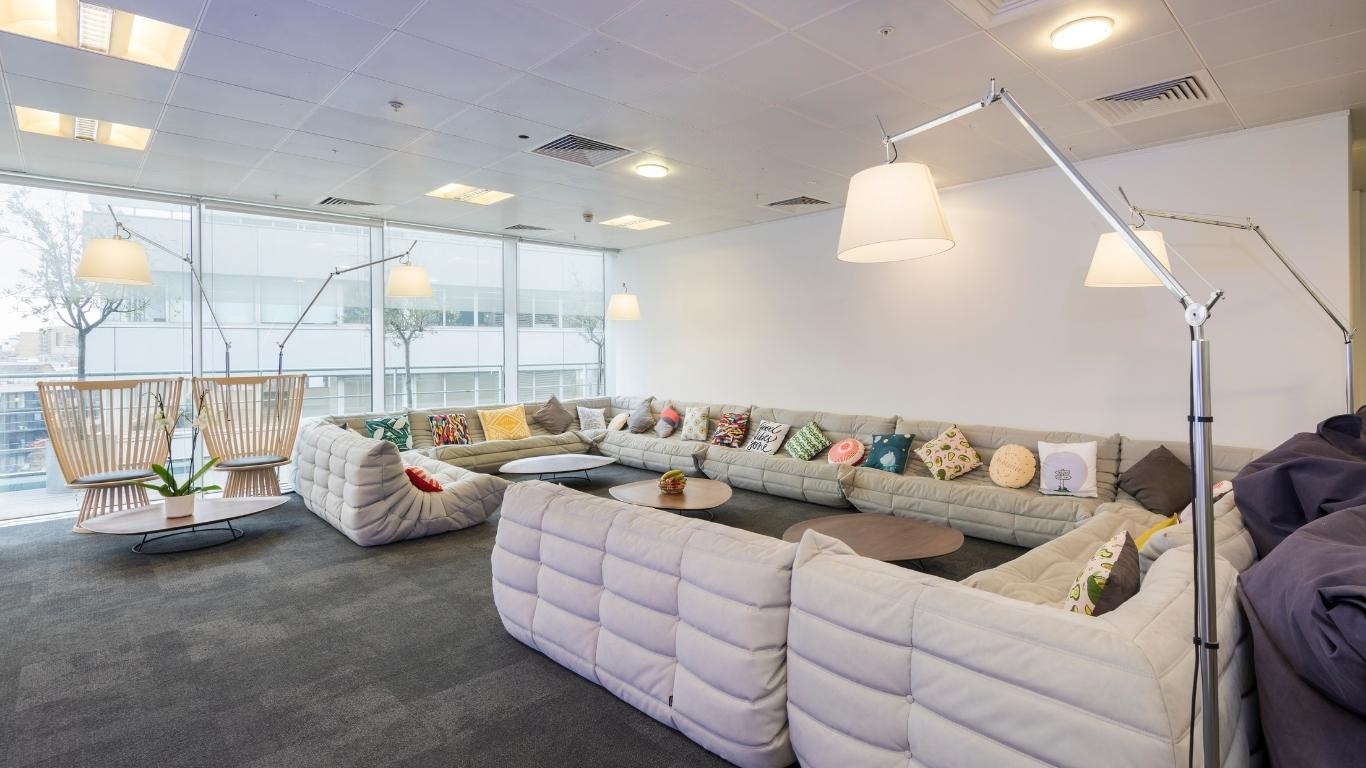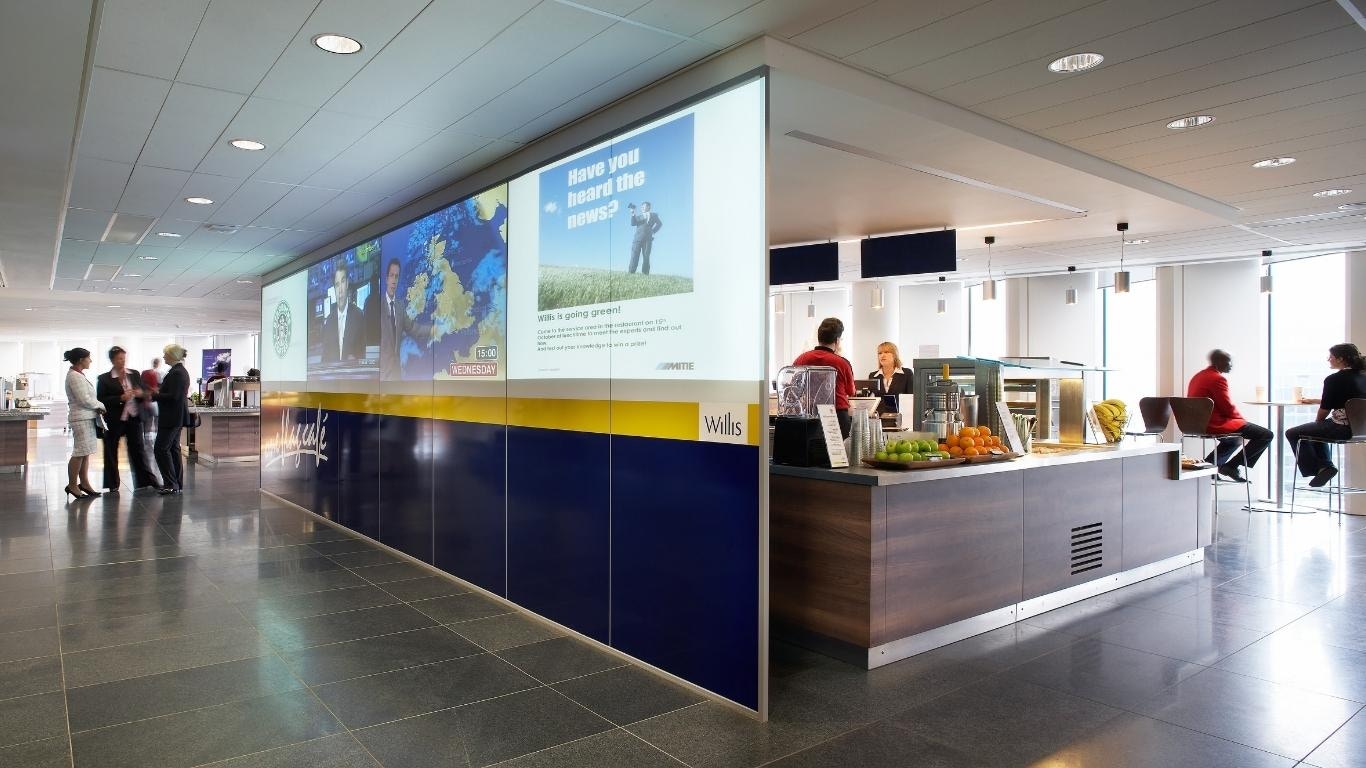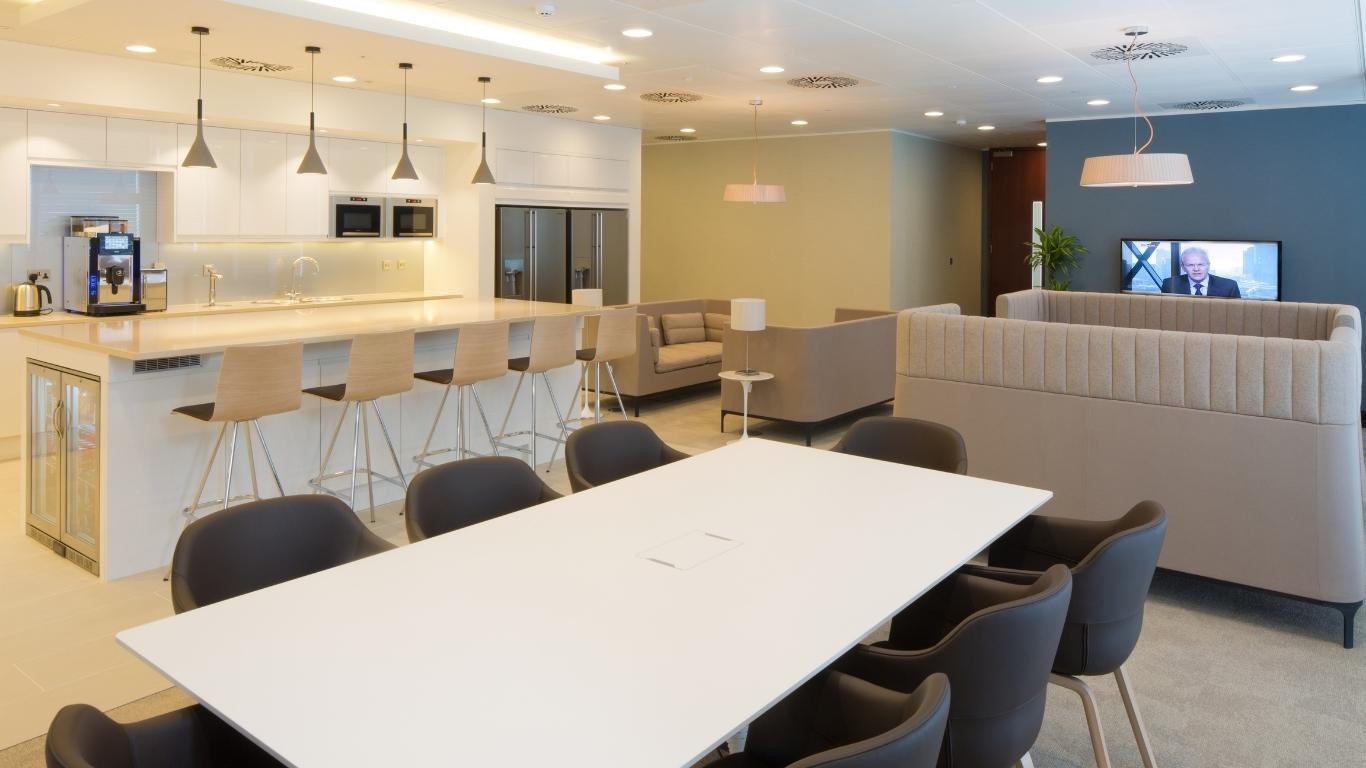Every year we share an article on what our team of designers and workplace experts consider to be the main office design trends for the coming year. It’s usually a lively conversation that transcends our London office into the local Islington cafes and bars. This year is far different with discussions taking place over Zoom. In this Office Design Trends 2021 report, we cover 7 key trends:
- Hybrid working and the impact on office design
- Downsizing to work closer to the office
- A drive for office refurbishment and space optimisation
- Wellbeing and the rise of the collective workspace
- Seamless technology integration
- Burolandschaft for the 21st Century
- The sustainable workplace
1. Hybrid working and the impact on office design
The establishment of a hybrid working model across sectors is perhaps the most wide-reaching office trend of 2021, and arguably one that will remain for the years to come. In fact, a recent UK ONS survey has shown as many as 85% of the UK workforce favour hybrid working (some days at the office and others working remotely). Similarly, around 55% of employers in the UK expect their staff to work at home or remotely at least part of the week.
In previous years, our focus has centred on how we can make the physical workplace a better place to work but this year, we will take a more holistic view and look at the changing nature of work and how this in our opinion will influence office design and the workplace in a broader sense.
In this, the strangest of years, unsurprisingly our collective thoughts around office design trends for 2021 tended to focus on how workplaces will adapt to a post-Covid environment and the perceived desire for a more blended way of working embracing a mix of home and office working. With that in mind, let’s start with the physical scale, size and location of offices.
